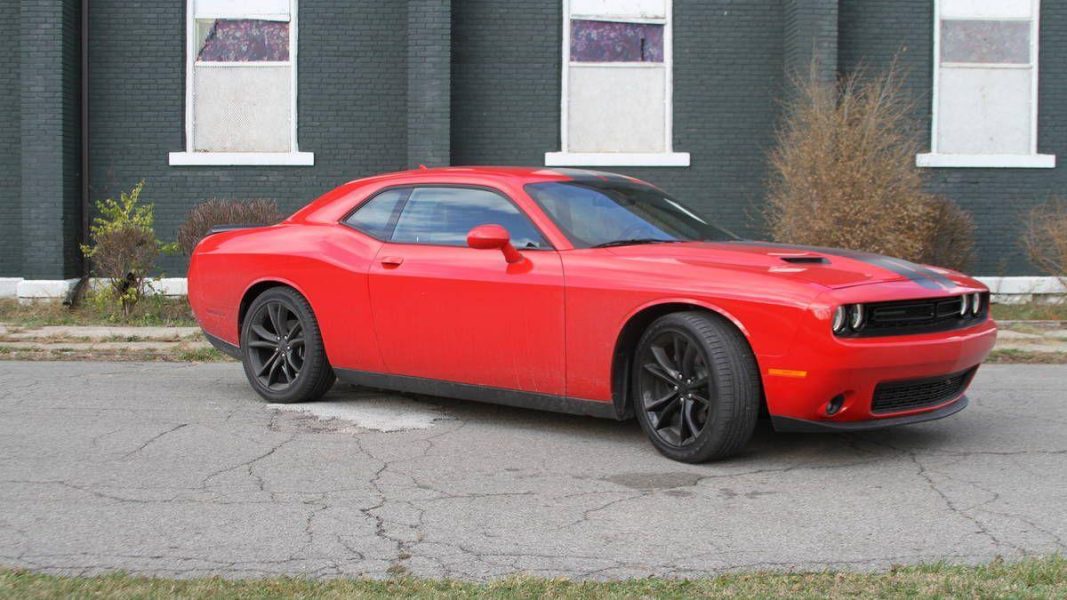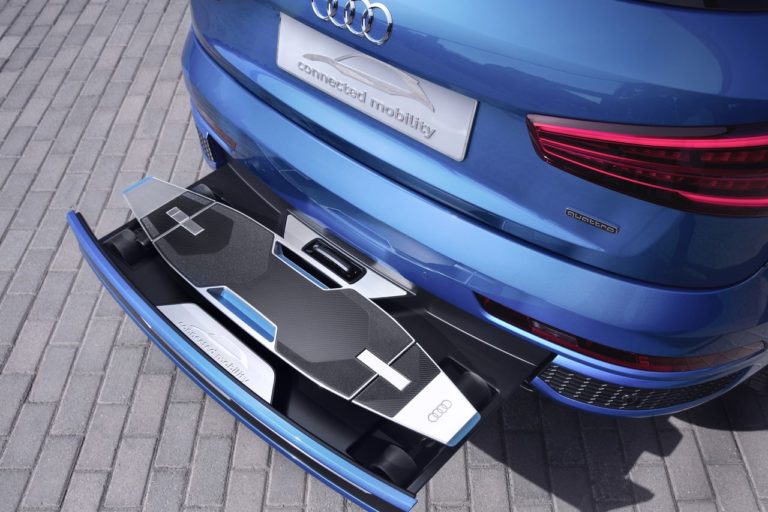
Dodge Challenger SXT 2016 review
Falling in love with a car at first sight is illogical, ridiculous and, if you make a living from cars, unprofessional.
But sometimes there's nothing you can do. My first look at the brutal black and blue Dodge Challenger we're testing in one of the world's most car-obsessed cities, Los Angeles, came across a crowded parking lot, and all I could really see was the color and roofline. but that was enough.
There's something powerful and strong about this car's design - the clunky width, the average nose, the ferocious look - and it comes down to just one word - tough.
It’s what muscle cars should be, of course, and the Challenger has echoes of our own classics, like the XY Falcon, from its wide, flat boot-lid to the racing stripes and the retro-style gauges. Being in it genuinely does make you feel cool, and a little bit dangerous. This killer Dodge could make even Christopher Pyne look tough. Almost.
Part of the magic is that the designers refer to it as a greenhouse, which basically describes the area of a car's glazing. The Challenger has a tiny body with a curved rear that looks great but makes it hard to see from inside the car, especially with the big fat A-pillars and the small slanted windshield. It's a bit like riding around with Kylo Ren's helmet on - it looks great but isn't very practical.
Even in Los Angeles, where the streets are full of such cars, it attracts attention.
Looks, of course, aren’t everything, even for a muscle car, and it takes less than a minute for some of the lustre to come off as I go to open the boot (which turns out to be surprisingly enormous). The first physical contact with the car is best described as the opposite of that quality feel and heft you get from European marques.
The Challenger feels a bit thin and plastic around the edges. That impression is sadly reinforced by the interior, which has familiar cheap Jeep buttons and a similar dash feel (although the retro dials are in place and look fantastic).
What no Jeep has, of course, is the Sport Track Pack buttons (there's a Sport button, too, but all it does, oddly enough, is disable traction control).
Not only does this allow you to use Launch Control, but it also offers a whole screen of options and readings, as well as the ability to set up "Launch RPM Set-Up" before pressing the "Activate Launch Mode" button. It sounds like KITT from Knight Rider is talking nonsense, and it fits in with a certain bad reputation among American motorists who are obsessed with getting out of traffic lights fast and don't care too much about turning. Or anything else related to driving.
Unfortunately, the SXT we drive doesn't have the huge supercharged 6.2-litre V8 Hellcat (yes, they call it the Hellcat) 527kW, which makes Ferraris and Lamborghinis look underpowered. With that under the hood, Launch Control is without a doubt an unforgettable experience, getting you from zero to 60 mph in - they measure - 3.9 seconds and the quarter mile in 11.9 seconds.
If straight-line speed is your thing, you'll fall in love with this Challenger right away.
Our car has to make do with a 3.6-liter Pentastar V6 engine with 227kW and 363Nm, which is somewhat less than a car like this deserves. The SXT is reasonably ready and transfers power smoothly, but the foot setup makes a lot of noise (sounds like they borrowed an exhaust note from the Grease soundtrack during the drag racing scene) and not much. yet. Acceleration is adequate rather than thrilling, and 0-60 times fall well behind the Hellcat's 7.5 seconds.
What the clever marketeers, who can offer this entry-model version to Americans for as little as $US27,990 (around $A38,000), know is that this car is far more about perception than reality. Buyers want to look good in a Challenger even more than they want to go quickly in one. The best moments in this car will be at low speed, crawling past plate-glass windows to admire yourself or watching the jaws of strangers drop low.
The ability to evoke love at first sight is a powerful marketing tool for a car.
Even in Los Angeles, where the streets are full of such cars, it attracts attention, and it passed the ultimate parking test at The Line - a very trendy place in an exciting area of Koreatown, this is such an arctic hotel that they do not know. You don't even need to turn on the refrigerator. The parking attendants clicked their tongues and whistled every time we drove up, congratulating us on the choice of a courageous car, and even deigning to put it “above”, and not underground, so that people could watch it on the hotel forecourt.
As is often the case with American cars, the Dodge has flaws that feel strange to us, like steering so light that it feels almost like a remote-control system, a ride best described as jouncy and seats that somehow manage to feel both overstuffed and under-supportive.
Throw it into a corner and you won't be blown away by its harshness or tactile feedback, but you won't be overwhelmed either. Modern American cars are much closer to world class, or at least to internationally recognized standards, than ever before.
You may be surprised to know that Dodge is already present in Australia, and if so, you really should visit their website because it's ridiculous to go to the tab with the list of available models and find only one, Journey.
At first it seems puzzling that the company has chosen this rather boring SUV as its only offering over the Challenger, but the logic is actually remarkably simple. The Journey, which is pretty much a Fiat Freemont, is right-hand drive, while the Challenger is not.
But that will be in the future, and Dodge in Australia (aka Fiat Chrysler Australia) raised their hand so high to get this car here that it can be seen from space.
If the company can get a new Challenger that will no doubt be very similar to the current one, the previous one and so on, then here it will change its profile in the Australian market overnight. And if he can sell them for under $40,000, even with a slightly uninteresting $6, they will sell like crazy.
The ability to evoke love at first sight is a powerful marketing tool for a car.
Will the new Challenger be your ideal muscle car? Let us know in the comments below.

